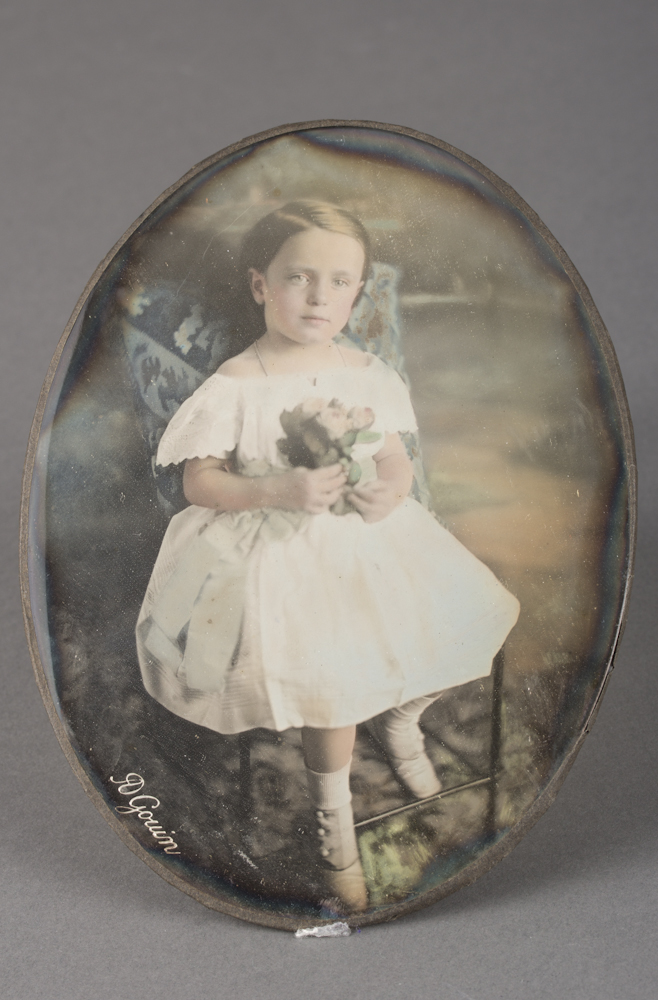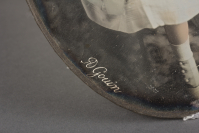Untitled (Portrait of a Seated Girl Holding Flowers)

Alexis Louis Charles Gouin, Untitled (Portrait of a Seated Girl Holding Flowers), ca. 1850, quarter plate daguerreotype, Museum Purchase: Funds provided by the Photography Council, public domain, 2012.81.5

This work is not currently on view.
- Title
Untitled (Portrait of a Seated Girl Holding Flowers)
- Artist
Alexis Louis Charles Gouin (French, born United States, died 1855)
- Date
ca. 1850
- Medium
quarter plate daguerreotype
- Dimensions (H x W x D)
image/sheet: 4 1/2 in x 3 1/2 in
- Inscriptions & Markings
inscription: L1034, graphite on sticker, verso
signature: A. Gouin, lower left of image
- Collection Area
Photography
- Category
Photographs
- Object Type
daguerreotype
- Culture
French
- Credit Line
Museum Purchase: Funds provided by the Photography Council
- Accession Number
2012.81.5
- Copyright
public domain
- Terms
The daguerreotype was the first commercially viable photograph, becoming a sensation in Western Europe and the United States during the 1840s. For the first time, members of the middle class could afford lifelike portraits of themselves and of loved ones. But this new audience was sometimes uncomfortable with the unrealistic gray color of the photographic plate, prompting the addition of pigments that suggested natural flesh tones. Alexis Gouin, an early photographer who was trained as a painter, was renowned in Paris for his expertly hand-colored daguerreotypes. In 1855, an admirer praised Gouin's work in the photography journal La Lumière, proclaiming, "His bodies are alive, their flesh throbs before our eyes. Nature has been captured on the spot and translated into poetry through the talent of a painter."
- Exhibitions
2012 Flesh and Bone: Photography and the Body Portland Art Museum









